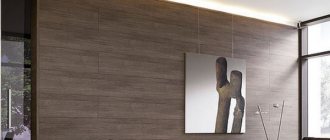Nowadays, loggia and balcony are constant companions of a residential building. And some lucky ones own an apartment with several additional rooms at once. It is interesting that when put into operation, neither a loggia nor a balcony is literally a room suitable for habitation, but with a strong desire from the residents they can become one. What is the difference between a balcony and a loggia, and which one is better - these are questions that interest many. Especially young people who are choosing their future home.
Balcony - definition
Initially, you need to decide which areas can be called a loggia and a balcony. This can help when choosing an apartment to buy.
A balcony (translated from several European languages as a beam) is a platform with enclosing railings that protrudes from the outside of the building and has a passage into the interior. In fact, this is a hanging slab, permanently fixed at one end in the outer wall of the building. The other three sides only have fencing.
What are the differences between a balcony and a loggia? Comparison of design parameters.
How can an ordinary person define the concepts of a balcony and a loggia, what is the difference? After all, today they are not only similar to each other, but also differ little in their functions and design. The difference between a loggia and a balcony? Initially they have completely different performances. Balcony structures are of the hinged type, and the loggia, in turn, is built directly into the main room.
What is the difference between a balcony and a loggia:
- Open balconies often play the role of a decorative element of a building. They are most often used as a place to relax and stay in the fresh air;
- The loggia can be either glazed or not, but even in its unglazed form it can serve as not only a place to relax, but also a place where you can store various items and a variety of cabinets for small things.
- Although today the line between these two options is gradually blurring, in fact the differences are obvious.
Dimensions
- The main difference is the area. Most often today there are narrow balconies and large loggias. Previously, most houses were built according to a standard plan and the dimensions were as follows: loggia 6 meters, balcony 2.5 meters. The fact is that the loggia runs through the entire room, and sometimes through several rooms at once, but the balcony is most often located opposite the door to the living space and is small in size.
- The balcony is limited by the area of the slab on which it is located. Balcony slabs, as a rule, have standard sizes, but private developers often use non-standard slabs to make the balcony larger. Today, in new buildings you can increasingly find balconies that have the same area as a loggia;
- In turn, the loggia is limited by the size of the rooms, or the apartment as a whole. If you want more space in your apartment, then this option will definitely suit you.
Also read: How to adjust a plastic balcony door, faults and recommendations
History of the balcony
It first appeared as an element of architecture in the East. In Europe, the first construction of balconies began in the 13th century, using them as hinged loopholes on fortress walls for pouring tar onto the heads of attackers. Later they began to be used as architectural decoration.
Many people remember the famous scene with Romeo's declaration of love to Juliet. The girl was on the balcony. This is a confirmation of the fact that in Shakespeare's time such an element of buildings was common in the houses of nobles and wealthy merchants.
In different countries, their own types of balconies appeared, different from others, the features of which depended primarily on the weather conditions in a particular area:
- In regions with warm climates there are open areas.
- In areas where it is hot - structures with a canopy.
- In areas with frequent rain and cool winters, use bay windows (semicircular enclosed spaces).
In Russia, structures of this type began to spread widely in the 19th century, when construction was already carried out using metal and concrete. Cast iron prefabricated platforms appeared and became very popular. Subsequently, technologies only improved and led to the creation of modern balcony design. Thus, with the advent of reinforced concrete slabs, fastening on beams became a thing of history, which made it possible to increase the size of the site.
Is it possible to combine the kitchen with a balcony?
Very often a kitchen is combined with a balcony. What can this do? On the former balcony you can arrange a small dining room, or make it a place for a refrigerator and freezer, that is, food storage.
A bay window-shaped balcony can become a work area for your kitchen
If you combine a loggia with an apartment, the possibilities open up even greater. A popular option today is a study or workshop for a needlewoman. Often the loggia is turned into a kind of hut-reading room, where there is a sleeping place, cozy and pleasant for spending time, bookshelves or a bookcase, pillows, blankets, etc., and, of course, good lighting.
Related article: Wallpaper for the kitchen in different styles: Provence, modern, country
Loggia - what is it?
Thanks to the Italian language, the beautiful-sounding word “loggia” has appeared in our vocabulary. It does not mean a hanging room, but a room built directly into the house, which has walls on three sides and is an internal part of the building. In fact it is a niche.
Please note: if the apartment is corner, then the walls of the loggia can only be on two sides.
Currently, the owner of the apartment independently decides whether to glaze his loggia or leave it in its original form. The discrepancy between loggias glazed in different ways leads to a spoiled appearance of the building's façade, which is why in large cities houses under construction with such structures began to be glazed during the construction process.
Differences between a balcony and a loggia according to SNiP
The difference between a balcony and a loggia is precisely stated in SNiP number 31-01-2003.
It says the following:
- A balcony is a building whose base is a cantilever slab, clamped into the wall of the house, with a fence for safe use. The structure is open on three sides and protrudes beyond the building's façade. It is worth paying special attention to the loads acting on this slab, because cantilevered structures have limited load-bearing capacity. Heating is not provided here, and the enclosing structures (fences) are not insulated.
- The base of the loggia is a slab that rests on two or three load-bearing walls. This room is not limited in area and has a strong fence. The structures can be well insulated and heating can be provided to this room. Heavy glazing is allowed.
Important! Only a loggia can be combined with an apartment, because the balcony slab will not withstand increased loads after thorough insulation and major glazing.
The main difference according to SNiP between these premises is the way their area is taken into account when calculating the total square footage of the apartment. During the calculation, the balcony area is taken into account with a reduction factor of 0.3. For example, if the actual square footage of this room is 1.1 m², then when calculating the total area of the apartment it is taken into account as 1.1 x 0.3 = 0.33 m².
When calculating the area of a room with three main walls, a reduction factor of 0.5 is used. For example, if the actual area of the loggia is 1.6 m², then it is taken into account as part of the total square footage of the apartment as 1.6x0.5 = 0.8 m².
However, the above coefficients are valid only for unglazed rooms. After installing the glazing, the actual area of the balcony room is multiplied by a reduction factor equal to 0.8. As for the room between three main walls, after glazing the reduction factor is equal to 1, that is, the area of the glazed loggia is indicated in the apartment’s technical passport without reduction.
How to make a balcony with a roof in a private house
On a note! After redevelopment or installation of glazing, you need to contact the BTI and make the appropriate changes to the technical passport.
The difference between a loggia and a balcony: we compare according to different parameters
How to understand the difference between a balcony and a loggia? After all, glazed structures are closer to each other in their functions and even in appearance.
First of all, a balcony and a loggia differ from each other in their practical design - the first structure is hinged, the second is built-in.
- An open balcony often plays the role of a decorative element of a building and is used by residents of the house as a place to relax and spend time in the fresh air.
- The loggia, due to its closedness, even without glazing, allows you not only to “go out and breathe,” but also to place pieces of furniture and storage cabinets.
Dimensions
Another difference between a loggia and a balcony is their area:
- The balcony is limited by the area of the slab protruding from the facade of the building, which usually has standard dimensions. However, they may differ in houses built by private developers.
- The loggia is limited by the size of the rooms to which it is adjacent. The length of such an additional room may include a kitchen and one of the bedrooms, and its width will be standard.
If you need to have more free space, it makes sense to choose an apartment with a loggia.
Load bearing capacity
When comparing the load-bearing capacity of a loggia and a balcony, the first type of structure wins:
- the balcony has restrictions on the total weight of furniture and equipment that can be installed on it, since it itself is an external structure;
- the loggia has no such restrictions - you can install the same items on it as in any room of the apartment.
Possibility of arrangement
To insulate and glaze a balcony, work must be done on its three free sides. This increases the costs when installing double glazed windows because three structures need to be made that require connections. For similar work on the loggia - with only one. But for the owner of a balcony, financial costs may be lower due to the smaller area of the room. Especially if you decide to insulate both the floor and the ceiling.
There is another advantage of a loggia - it can be used to create any room at the owner’s request. This could be an office, a relaxation room or a winter garden. Very often they combine a kitchen with a loggia, then in addition to the total area they get a heated dining room. Transferring sections of central heating batteries to the balcony is prohibited. Therefore, making it a warm room for the winter is more problematic, since the additional room will have to be heated with electrical appliances.
And yet, what is better – a balcony or a loggia? From their comparison, we can conclude that an apartment with a balcony area is preferable if we consider this design from an aesthetic point of view. From the standpoint of practicality, the wealth of possibilities of the loggia looks more attractive. The choice is yours!
Which is bigger: a balcony or a loggia
Judging by the typical sizes, it is easy to draw a conclusion. But today there are loggias of different designs; there are very large loggias, which are often converted into another living room. Of course, after insulation.
Various ideas can be brought to life without having a small loggia. One of them is insulation
If we sum up the comparative results, we get the following reminder:
- The loggia and the building have three common walls, while the balcony has only one. But if the loggia is semicircular or corner, there will already be two common walls.
- The loggia has a ceiling, but the balcony lacks this part;
- The balcony always extends beyond the facade of the building, the loggia does not;
- In many cases, heating can be installed on a loggia; with a balcony, this cannot be done legally and safely;
- When arranging a balcony, you always take into account the permissible load; with a loggia such manipulations are not required;
Related article: Application of heat distribution plate for heated floors
Both the loggia and the balcony, according to the standards, do not belong to heated rooms, and if you installed heating on the loggia, the space will be included in the total area of the housing.
Design options for balconies and loggias (video)











